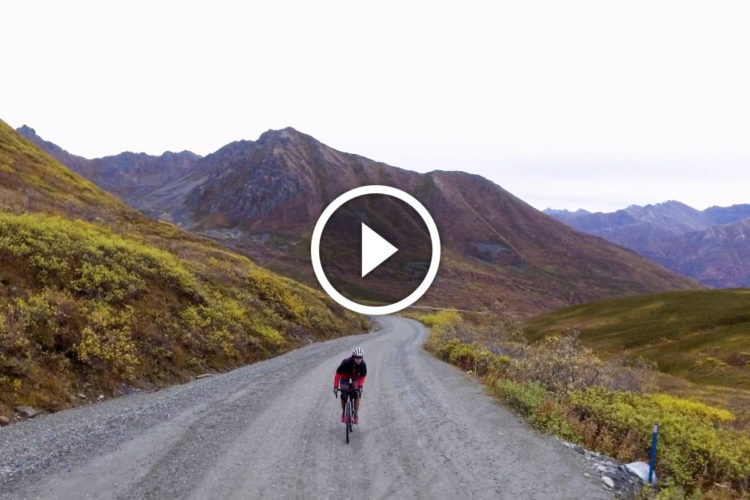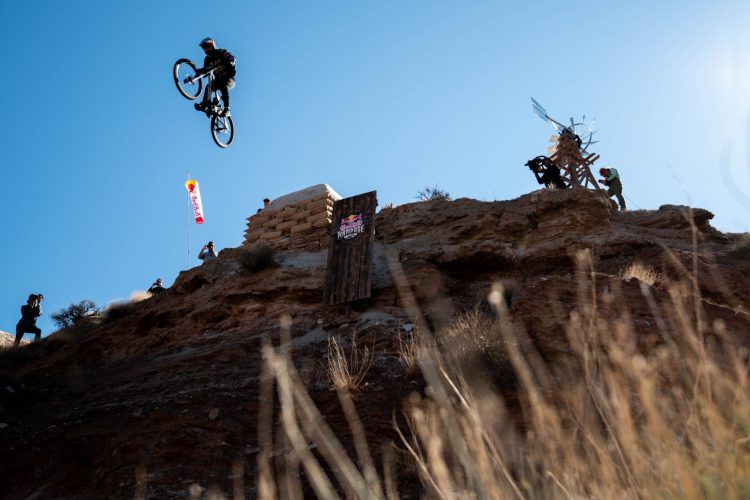
Mountain bike suspension has become relatively complicated in recent years. OK, so we are probably better off than when we were dealing with elastomers, but there are a vast number of considerations to finding the settings that will work best. Yet, amongst all those considerations, there is one factor that feels like it might get overlooked, and that is my weight.
Well, not my weight in particular, which really is none of your business.
As a lighter than average rider, or at least I was before the current pandemic started, I have sometimes found it challenging to take advantage of all of the travel and features my suspension offers. After talking to a few other riders, mostly women, I found that I was not alone in this. This is not to say that there is any grand conspiracy going on here. It’s evident that suspension manufacturers have to develop products that work for a wide range of people, and it’s obviously in their interest to provide as wide a usable range as possible for the stock tunes. Unfortunately that range doesn’t necessarily reach lightweight riders. I asked some industry specialists how light mountain bikers can get the most out of our suspension.
Definitions
At the outset of my discussions with these “suspension boffins,” it became immediately apparent that I needed to both learn and regurgitate some essential definitions.
Sag is the amount of travel your bike compresses underneath your neutral riding position, AKA your weight. The amount of sag is dependent on the air pressure or coil spring rate of your suspension, and a good rule is to set the sag at around 25-30% for your typical trail and enduro steed.
Setting sag is a good starting point, but you will want to amend that spring rate further by adding or removing air from the shock or changing the coil. However, if you just keep bottoming out frequently at the appropriate sag level, you might have a look at changing your air-spring rate progressivity by adding tokens to adjust the volume inside the air chamber, changing the force required to compress the end of the shock or fork stroke, and potentially allowing you to run lower pressures.

You can also change how fast your suspension compresses and rebounds. Whilst this is separate from the sag or the spring rate of the suspension it will also have a noticeable impact on ride feel. To learn more, check out this article about compression and rebound settings.
A suspension tune is a term you will come across, often when purchasing a new bike or as a custom option later on. Tuning can refer to a wide range of specific actions such as adjusting the compression and rebound settings, changing the oil types and volumes, or altering some of the internals. Bike companies will often state that a new bike comes with a specific suspension tune. For example, there are often suspension tunes for women’s-specific bikes.
Of course, all of this is relative to your frame’s suspension design. The frame’s leverage curve, i.e. the relationship between the frame’s movement through its travel and the force required to compress it, will result in the suspension being more progressive or linear.
How does suspension work for lighter riders?
So how does all of the above work when you weigh less than the rider the suspension engineers had in mind?
When discussing this topic with Cane Creek, they underlined the importance of setting up your suspension settings correctly. If the spring rate is set up correctly, a lighter rider should be perfectly capable of utilizing all of the suspension. They also noted that very often manufacturers will ship the forks and shocks with tokens which could hinder the ability to use full travel if you are on the lighter side. Conversely, if you’re at the heavier end the bike might not come with enough tokens. So if you can’t bottom out your fork no matter how hard you huck it to flat, it may be worth checking the air-spring internals and removing volume spacers.
Andrew Slowey from Cane Creek says “Spring rate, volume adjustment, and rebound settings will be vital for setting up lighter-weight riders. Oftentimes we find that air-sprung suspension is more beneficial for lighter riders as it provides more finite and accessible adjustment. Lighter riders will subsequently have lower spring rates and less volume adjustment, which will require less rebound control from the damper.”

From all of this, you could deduce that a more adjustable air suspension is probably going to help a lighter rider get to the right answer in the end. However, that is not to say that the right coil fork couldn’t achieve the same results. It just might take a bit more time and money to get to the correct answer with a few different springs. However, the suspension itself isn’t the only factor here; the bike matters too.
How do bike companies approach suspension settings for lighter riders?
When discussing this with Jen Audia from Liv Cycling, perhaps unsurprisingly, it was clear that women were at the forefront of the conversation, and weight is often an important topic when designing their bikes. The team at Liv Cycling has found that standard suspension tunes weren’t the right approach for their bikes since their riders were, on average, lighter than the average mountain biker.
Jen says, “We’re the only brand who designs our bicycles to maximize women’s muscular mass, strength, and activity patterns from women-only body data, to create the most harmonized and efficient performance for women. Our Advanced-level carbon bikes have frame stiffness tuned specifically for women, and our full-suspension mountain bikes have suspension tuned specifically for women.”
All of the bikes Liv produces are tuned for their specific use and tested with a female-only crew. Multiple variables play into choosing the right components. It’s not only stiffness but also intended use or performance targets. Liv hasn’t been afraid to spec bikes with coil shocks where they felt it was appropriate to provide the best on-trail feel.
“We would certainly use coil shocks where we feel like it would improve our platform’s performance and provide a rider benefit. For example, we previously spec’d a coil shock on our 2018 Hail Advanced 0.”

On the other hand, Ibis Cycles is creating bikes with everyone in mind, and their approach to accommodating riders of all sizes is not an accident. Take it from Roxy Lo, one of the owners and an industrial designer at Ibis, who stands 5’1″ tall, and Tom Morgan, the brand’s president and a co-owner, who is at 6’5″ tall.
Three years ago, Ibis rolled out a “Roxy tune,” which came about because Lo found it a challenge to make the most of her suspension whilst testing some of their range. Ibis felt that this tune enabled lighter riders to get a shock tuned to their needs straight out of the box. Since then, the company has introduced a new suspension set up called the Traction tune.
Saris Mercanti of Ibis says the “Roxy tune was based on the feel, it wasn’t working for Roxy, so we did more testing, and we figured out what worked for her.”

Ibis also spent time with Motion Instruments understanding racers and average riders alike, specifically how suspension compresses underneath them (in nerd terms: quantifying critical wheel speed in both directions — compression and rebound), to determine optimal shock and fork tunes for Ibis customers.
“[Motion Instruments] have been sponsoring our EWS team as well. When it comes to EWS racers, they are faster than we could ever be. They hit things really hard. Thus we have identified the target speeds, and we compared this against an average rider. We realized we needed to back off the damping […] so we can achieve the same speeds as those guys were, so our suspension would feel just as good as they were feeling.”
As a result, there is now a “lighter” or a “heavier” traction tune available to choose from when building your Ibis bike, no matter the size of the bike you ride. Ibis appears to be able to offer a range of tunes which more appropriately suit the individual rider’s needs. It is interesting that this approach is less common across the bike industry at large.
Some other manufacturers tune suspension differently across their range of frame sizes. For example, Rocky Mountain and Specialized, amongst others already do this. On the other hand, other brands like Liv bikes do not, perhaps because they feel that the suspension tunes they use will work across their size range. However, much like how some brands adjust chainstays or crank lengths across the ranges, it makes sense that they would approach suspension in a similar way.
How do lightweight racers set up their suspension?
I was also lucky enough to speak with the woman of the hour, EWS legend Isabeau Courdurier, to ask her how she approaches her suspension settings. Weighing in at approximately 50kg (110lbs), Isabeau was keen to share her thoughts on this topic, as she has struggled to get the most out of her suspension.

Being a top-level EWS rider comes with a few perks, like the ability to visit suspension tuning camps and find the right set-up whilst working with the suspension mechanics. However, Isabeau started her racing career without that level of support and had a great tip for those who don’t have it either.
“I would say do not hesitate to ask people to help, who have got the knowledge. When I started enduro coming from XC I had no clue how to set up suspension. I asked for help at my local shop, and they helped me to find a setting to start with. I also suggest trying both extreme settings to see how the bike responds, for example, rebounds fully open and then fully closed. And from there, starting to adjust clicks after clicks until you find what works the best.”
She also debunked a myth that some lightweight riders might have heard, that lighter riders will be better off with less suspension travel. Isabeau’s experience is that if you ride enduro trails, you will still benefit from a Rockshox Zeb, a Fox 38, or another longer travel fork, just as much as a heavier rider. However, Isabeau also pointed out that what works for her might not work for you. As an enduro racer, she has different goals compared to an average rider. Racers’ bikes are built for speed rather than comfort.
What worked for me?
Having a deeper understanding of how to get the most out of my bike has been invaluable. Recently I revisited the suspension on my Juliana Roubion and, despite the lighter tune on Juliana bikes, I removed the stock tokens and opened up my high-speed compression a little more. So far, this has improved my bike’s small bump sensitivity a little and improved the handling overall.

From my discussions with various stakeholders in the industry, it feels clear that while bikes and components will often be designed and modeled around riders who don’t look like me or weigh the same as me, with the right level of adjustment it should be possible to reach the same end goal of a great tune. Similarly, it shouldn’t be the case that lighter riders settle for lower travel forks and shocks; they should be able to tune long travel suspension to match their preferences.
Understanding your riding style and how your suspension can work for you is even more important than your weight. That said, it is likely that a specific lighter tune (whether it claims to be “female-specific” or open to all comers) is probably going to start you off on the right path, and some manufacturers are already reflecting this in specific tunes across their range of frame sizes.





















2 Comments
Nov 22, 2020
With all dat said, my Wildcat V1 is dialed with a tweaked Monarch that has had valving mods as well as blowoff tweaks to improve performance for a beanpole of a rider!
Coil spring is great for washboard and high frequency compression/rebound sessions that may cause packing of a slower air shock, this is why valving was reworked on my Monarch in the first place.
The above has brought the Wildcat to the point that I can take the suspension from rock crawler to Fleetwood Brougham mode in seconds. Yup, my Wildcat is my trail buddy!
Nov 20, 2020